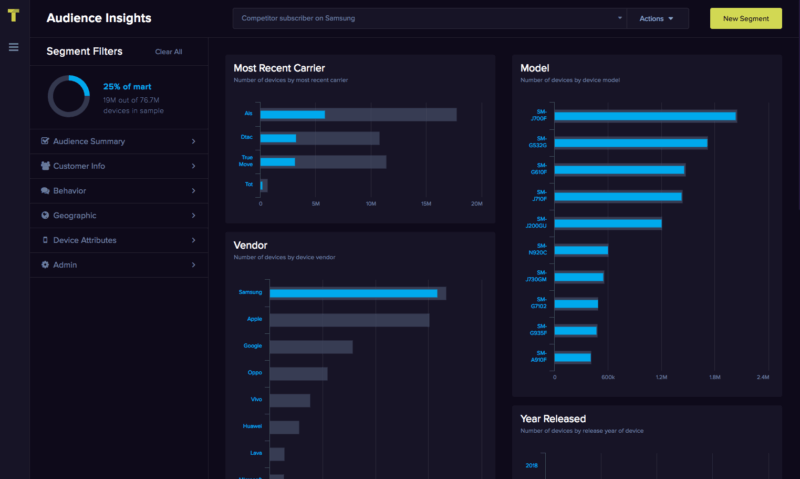The new offering moves the company into profile-based targeting and beyond its existing cross-device graph.

Tapad has made its living by helping brands reach the same user across her various devices, so that ads could be coordinated on, say, the same person’s phone, laptop and tablet.
This week, the New York City-based company is moving beyond its cross-device graph with the launch of a Customer Data Platform (CDP) that is tuned for specific industries. First up: the telecommunications industry, since Tapad’s owner is the Norway-based telco, the Telenor Group.
A key question: How does this CDP differ from what Tapad offered previously?
Before, CEO Sigvart Voss Eriksen told me, Tapad offered a professional service that helped a brand reach segments of users through its device graph’s third-party data. Or a brand could combine its own first-party customer data with Tapad’s third-party data, which includes demographics, behavior and lifestyle, and thus attach more attributes to its customers.
Matching between the brand’s list of customers and Tapad’s data can be done through the same cookie ID in both datasets for a given customer, or through a matching persistent ID, like an email address. Thus matched, a brand could then use the additional attributes about its highest revenue-producing customers, for instance, in order to find similar lookalike users who are customers of competitors — and send them enticing ads.
Tapad would activate the targeted media campaign for the brand through its own demand-side platform (DSP), or it could provide a file to the brand’s ad tech partners.
The new CDP, on the other hand, is a self-service platform. You, the brand, can now upload your own first-party data of your customers and match it against Tapad’s third-party data. You can then create your own campaign and segments before pushing them to Tapad’s or another DSP. Here’s a screen from the new CDP:
Additionally, Eriksen said, the new CDP maintains unified profiles on anonymized users, so the profiles can be continually updated, compared to one-off runs that occurred before. In other words, campaigns are not just runs that line up datasets, but runs that launch ads through persistent profiles. Plus, Tapad now supports campaigns in Facebook, whereas before it hadn’t.
For industry-specific targeting, Eriksen said, the CDP is able to filter by device, model and year for each consumer. For a telco client, this can mean the specific iPhone version; for an automaker, it can be the type of car someone chooses and whether they prefer to lease or buy.
Eriksen said his company has data on virtually the entire US market, and “close to 100 percent” of the markets in the larger European countries, like UK, Spain, Italy and Germany.
When asked how Tapad intends to comply with the General Data Protection Regulation (GDPR), which goes into effect May 25, Eriksen noted that a brand’s first-party data is encrypted so Tapad can’t see it, and its own third-party data is anonymized.
As for the profiles, he said, they are “built on probabilities and interests” and don’t contain enough detail to require consent for use of personal data.
Marketing Land – Internet Marketing News, Strategies & Tips
(43)

